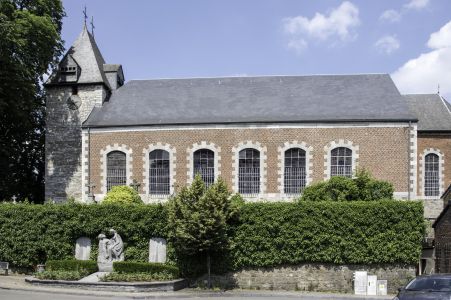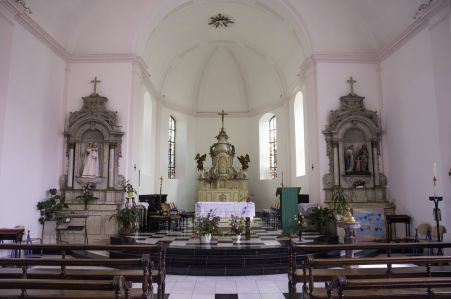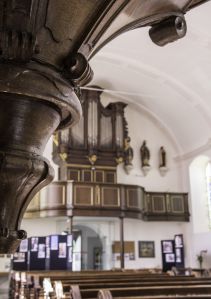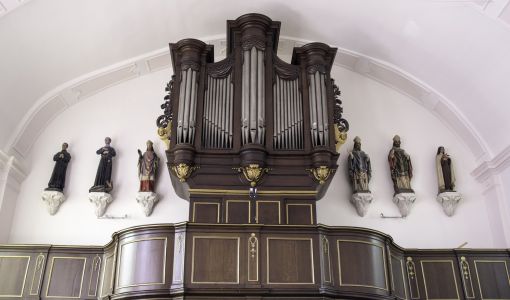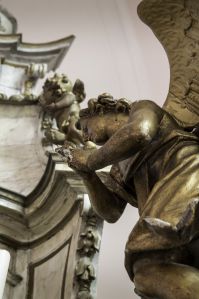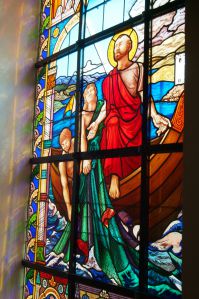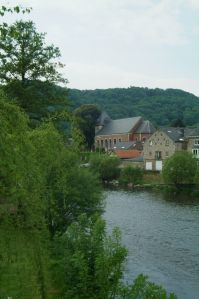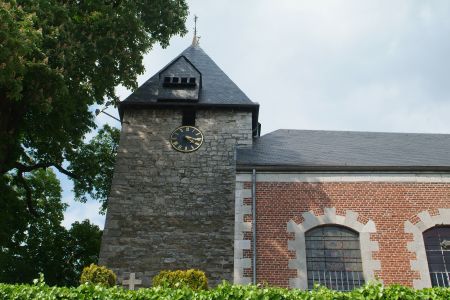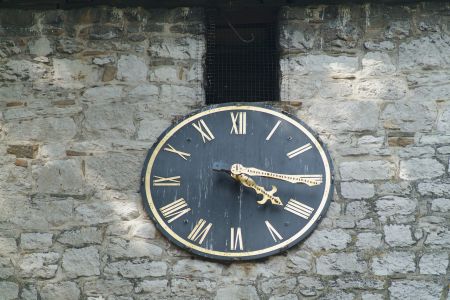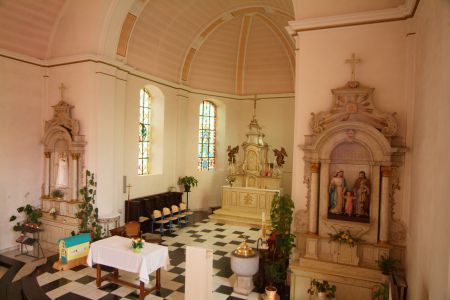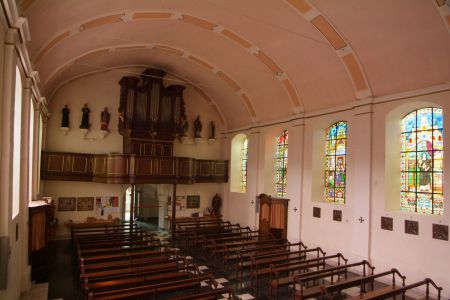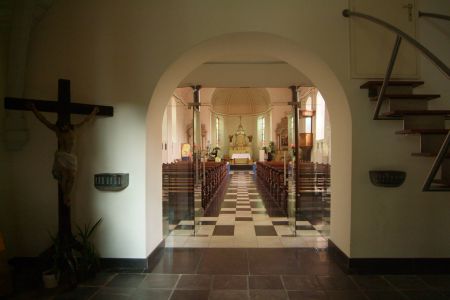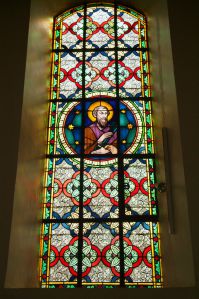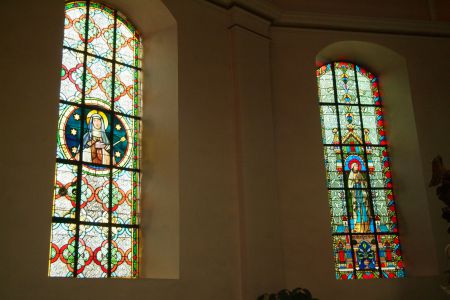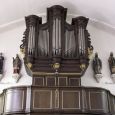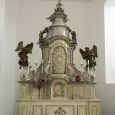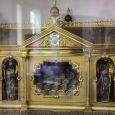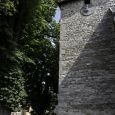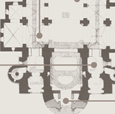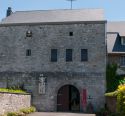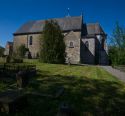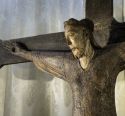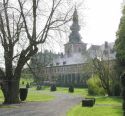Church | XIII-XIX | Romanesque | Catholic Church


Map
Opening hours
01 April - 31 October
Mon 8.00 - 18.00
Tue 8.00 - 18.00
Wed 8.00 - 18.00
Thu 8.00 - 18.00
Fri 8.00 - 18.00
Sat 8.00 - 18.00
Sun 8.00 - 18.00
01 November - 31 March
Mon 9.00 - 17.00
Tue 9.00 - 17.00
Wed 9.00 - 17.00
Thu 9.00 - 17.00
Fri 9.00 - 17.00
Sat 9.00 - 17.00
Sun 9.00 - 17.00
Religious offices
See the updated timetable on the website of our partner Egliseinfo
Description
Situated on the banks of the Amblève, encircled by an ancient graveyard with two fine chestnut trees in front of its porch, this church pleases those who appreciate rustic simplicity.
The first point to notice is its four sided Romanesque bell tower built in limestone (13th century).It is a listed building; one of the remnants of the ancient church. The present church, which is an extension of the tower, dates from 1744.
The interior is painted in white and is in the shape of a vessel with a single nave. It is illuminated by twelve stained glass windows (the last dating from 2025). There are four in the choir. The main altar is 18th century and recalls the Jesuit style. Some oak stalls in the choir. Louis XIV pulpit.
Photos
Remarkable elements
Stained glass windows
The windows at the back date from 1938 and those on the left from 1900-1901. Those on the right were broken during the destruction of the Sougné bridge on May 10th 1940. The first window was donated by a generous donor in 2002.
Four contemporary-style stained-glass windows have been replacing the simple windows since 2024; they depict the wedding at Cana, the multiplication of the loaves and healings, the Transfiguration and finally Gethsemane. They were financed with funds raised in his time by Father Benoît, OSM (Charles Courtejoie), a Servite religious who served the parish from 1984 to 1996.
Organs
The organs, installed by the firm of A. Clerinx of Sint-Truiden in 1862, were restored in 1969 by the Thomas de Ster organ factory, which maintains them. The organ course of the OVA Academy uses them every week.
Furniture
The present furnishings consist of three Jesuit-style altars (18th century). The high altar is surmounted by the original crucifix and adorned with four angels in the ‘Delcour’ style. In the narthex is a statue of Notre-Dame des Victoires.
Pulpit of truth in the Louis XIV style from Liège, pink marble stoup from Saint-Remy (L. Chèveront 1704), baptismal font: 14th century basin and 16th century base. Choir stalls (17th century).
Shrine
Recessed on the left in the wall under the rood screen, this reliquary shrine was donated in 1892 by the former parish priest of Sainte-Marguerite, Nicolas-Joseph Carpentier.
Bells
In 1840, Charles Causard de Tellin supplied two bells, a large one (538 kgs) and a small one (378 kgs) to replace the existing bell, the metal of which was recast for the new ones.
In 1847, the large bell was recast by Gaulard de Liège and its weight increased to 575 kgs.
In 1940, the two bells rang out of tune and Fr. Michiels of Tournai supplied two new bells and took over the old ones. The big one weighed 603 kgs and the small one 339 kgs.
n 14 July 1943, the small bell was taken away by the Germans and on 24 March 1944, it was the turn of the big bell. Only the large bell was returned intact on 6 November 1945.
On 28 May 1954, Mgr Creusen, vicar general, blessed a new bell cast by Fr Michiels of Tournai; with its 900 kg, it became the big one and the big one became the small one! It is dedicated to the Blessed Virgin Mary Immaculate and to Saint Theresa of the Child Jesus.




